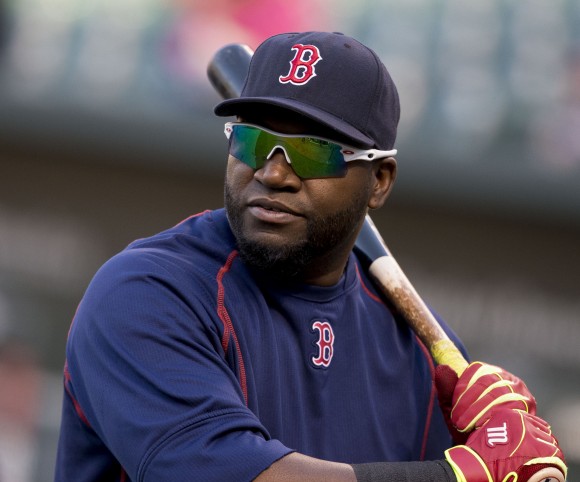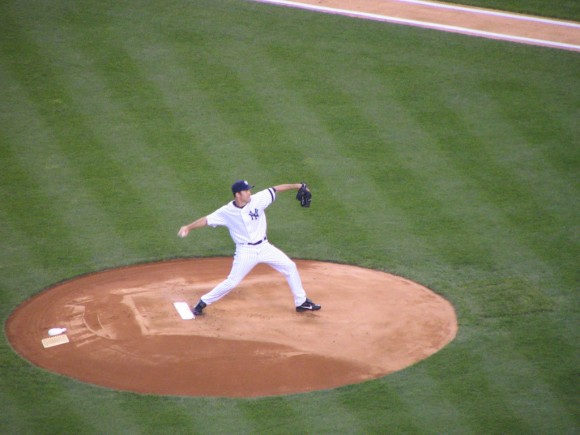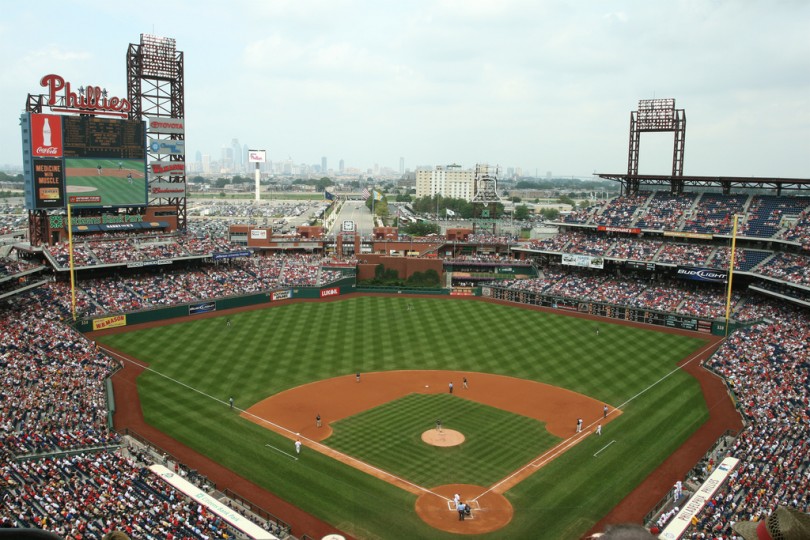aNewDomain — Baseball is the great game of tradition in the United States. But Major League Baseball is an institution that changes slowly, which means it’s conservative about rule changes. This is quite good. Those of us who love baseball want the integrity of the game to be kept intact.
However, baseball exists in an ever-changing world. It has to evolve and adapt if it’s to stay relevant. It’s a 19th century game that many believe has no good reason to still exist in the 21st century. So, some rule changes are good, too.
Slide the Rules
Remember when the All-Star game was irrelevant? There are those who think it ought to have stayed that way: a fun exhibition with no consequences. But in 2003 MLB changed the rules — the All-Star game suddenly determined which league’s team would be the home team in the World Series. To me and many others that constituted an excellent change. I love the fact that the All-Star game has had competitive relevance ever since.
 Another rule change, one with far greater reach, was introduced 30 years earlier, when the American League adopted the designated hitter rule. This rule allows one of the fielders on a team to forego batting. That player is replaced at the plate by a DH — a designated hitter who only hits and does not take the field.
Another rule change, one with far greater reach, was introduced 30 years earlier, when the American League adopted the designated hitter rule. This rule allows one of the fielders on a team to forego batting. That player is replaced at the plate by a DH — a designated hitter who only hits and does not take the field.
The DH is allowed to bat for anybody according to the rule, but we all know that he virtually always bats for the pitcher. Indeed, the whole reason for introducing the rule was to give MLB an infusion of offensive spirits — football and the NFL was gaining in popularity at the same time that baseball’s pitching had become the predominant force in the game.
The National League, the older of the two leagues, refused to adopt the proposed rule. The National League leadership said that part of baseball’s great tradition, as well as its original intent, is to have everyone who plays the field also come to the plate. This enhances the strategic aspect of the game, as some players are outstanding in the field, but sub-par at hitting, and vice versa. Pitchers are the worst hitters of all, because they are specialists. They spend their time practicing pitching, not hitting, and they don’t actually come up to the plate that often, as they are rotated throughout the season, leaving them bereft of needed batting experience.
So, for the last 42 years, we’ve had a situation in MLB where the American League pitchers don’t bat, but the National League pitchers do. During the World Series and regular season games (with interleague play) the rules shift based on who is the home team. When an American League team is the home team, the National League team uses a DH (although this wasn’t the way it was at first). But, when the National League team is the home team, the American League pitcher must come to the plate.
This is awkward. It gives an unfair advantage to the National League team when playing at home against an American League team, because American League pitchers never hit — really, they never hit in their own league. National League pitchers at least see a little batting time during the season. At the same time, it makes the American League more exciting to watch because the American League (or the Junior Circuit) features better hitting. And most people want a spectacle.
 Admittedly, it does make perfect sense to have a “real” hitter bat for the pitcher, who is the specialist on the team. It makes the game more exciting, rather than forcing fans to watch a nearly automatic “out” whenever the pitcher comes to the plate. On the other hand, there’s something to be said for the way the DH rule, as it’s currently incarnated, removes a key strategic element from the game, as the DH can stay in the game after a pitcher is removed.
Admittedly, it does make perfect sense to have a “real” hitter bat for the pitcher, who is the specialist on the team. It makes the game more exciting, rather than forcing fans to watch a nearly automatic “out” whenever the pitcher comes to the plate. On the other hand, there’s something to be said for the way the DH rule, as it’s currently incarnated, removes a key strategic element from the game, as the DH can stay in the game after a pitcher is removed.
Thus, I propose a designated hitter rule change to be implemented in both leagues.
The New Designated Hitter Rule
There’s a way to make the DH rule more exciting while preserving the originally intended strategic element that appeals to so many fans. I call it the “Attached DH Rule.”
It goes like this:
- The DH is only allowed to bat in place of the pitcher. The DH is “attached” to the pitcher.
- When a pitcher is removed from the game, his DH must also be removed from the game.
- When a new pitcher comes into the game, a new DH must come in to be “attached” to him and bat for him.
- If a DH gets removed from the game, for any reason, the pitcher he’s attached to must also come out of the game.
- In the event that a team uses so many pitchers in a game that the bench runs out of men to play DH, that team’s pitchers must bat until the end of the game.
Predicted Advantages and Ramifications of the New Rule
Were this proposed new DH rule to be adopted by both leagues, I predict we would see the following:
- Greater parity between the National League and the American League.
- More offensive excitement. Teams’s GMs will have more of a focus on drafting or trading for great hitters who are mediocre in the field.
- More protection for pitchers. Pitchers won’t be exposed to injuries such as getting hit by a pitch or pulling a muscle while running the bases.
- We’ll see more complete games pitched and an end to the stupid, childish “100 pitch limit.” The strategic problem of a manager needing to remove his best DH because he wants to remove his starting pitcher will mean more starting pitchers get left on the mound longer in more games. Starting pitchers will adapt by training so that they are able to pitch far more than 100 pitches in a game, if need be.
- We’ll see an end to the game-damaging nonsense of bringing in a relief pitcher to face just one batter, then immediately removing him from the game.
Wouldn’t you love to see those elements enter the great game of baseball? I know I would … but then I invented the rule!
For aNewDomain, I’m Brant David.
First image: David Ortiz by Keith Allison via Flickr
Third image: Mike Mussin by Aaron Vowels via Flickr
Featured image: Citizen’s Bank Park by Jim Epler via Flickr













